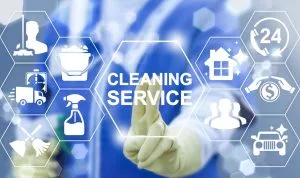This introduction delves into the critical role played by industrial hygiene services in identifying, assessing, and mitigating workplace hazards, from chemical and physical risks to ergonomic and psychosocial challenges.
It highlights how these services protect employees from immediate dangers and contribute to organizations’ long-term sustainability and profitability.
Furthermore, it sets the stage for exploring the what, how, why, tips, types, metrics, case studies, and future trends associated with industrial hygiene, emphasizing the holistic approach necessary to create safe, healthy, and thriving workplaces.
What is Industrial Hygiene?
Industrial hygiene aims to eliminate or minimize workplace infections, injuries, and long-term health difficulties.
This proactive strategy entails extensive workplace uations, analyzing possible hazards, and adopting mitigation or elimination actions.
Industrial hygiene is an interdisciplinary field that uses ideas from chemistry, biology, physics, and engineering to guarantee workplace safety and health.
How Do Industrial Hygiene Services Work?
Industrial hygiene services employ a atic approach to uate and manage workplace hazards. Professionals in this field, industrial hygienists, play a critical role in this process.
They conduct comprehensive workplace assessments, which include air quality testing, noise level measurements, ergonomic uations, and exposure monitoring for hazardous substances.
These assessments provide valuable data that is then analyzed to determine the extent of risk and the necessary control measures.
Once potential hazards are identified and assessed, industrial hygienists work closely with employers to develop and implement effective control strategies.
These strategies may involve engineering controls, administrative measures, or personal protective equipment (PPE). Training and education are integral components, ensuring employees understand the risks and how to protect themselves.
Continuous monitoring and periodic reassessment are vital aspects of industrial hygiene services. Regular follow-ups ensure that control measures remain effective and new hazards are promptly addressed.
Industrial hygienists stay updated on evolving regulations and scientific advancements to provide the most up-to-date recommendations.
Why is Industrial Hygiene Crucial for Workplace Safety?
The importance of industrial hygiene for workplace safety cannot be overstated. First and foremost, it directly impacts the health and well-being of employees. B
y identifying and mitigating workplace hazards, industrial hygiene services prevent occupational illnesses and injuries, reducing human suffering and healthcare costs.
Healthy and safe employees are also more productive, leading to increased efficiency and lower absenteeism rates.
From an organizational perspective, effective industrial hygiene programs can prevent legal liabilities and regulatory penalties. Failure to address workplace hazards endangers employees and can lead to costly lawsuits and fines.
Implementing industrial hygiene practices demonstrates a commitment to employee welfare, helps organizations maintain a positive reputation, and avoids legal troubles.
Additionally, industrial hygiene contributes to long-term sustainability and profitability. Companies reduce workers’ compensation claims and healthcare expenses by preventing accidents and illnesses.
Furthermore, it fosters a safety culture, employee engagement, and morale, resulting in a more harmonious and productive work environment.
Tips for Implementing Effective Industrial Hygiene Practices
Implementing effective industrial hygiene practices involves a series of steps and considerations. Organizations should designate a dedicated industrial hygiene team or hire certified professionals to manage their programs. C
clear communication and collaboration between management, employees, and industrial hygienists are essential for success.
Regular training and awareness campaigns ensure that employees are well-informed about potential hazards and how to protect themselves.
Another critical aspect is conducting thorough workplace assessments. This includes identifying all potential hazards, uating exposure levels, and determining control measures.
Engineering controls, such as modifying equipment or processes to reduce hazards, are often more effective than relying solely on administrative controls or personal protective equipment.
Documentation and record-keeping are essential to track progress and ensure compliance with regulations. Regular audits and reviews help organizations identify areas for improvement and adjust their industrial hygiene programs accordingly.
Finally, staying updated with the latest industry trends, regulations, and best practices is crucial to maintaining an effective industrial hygiene program in the long run.
Types of Hazards Addressed by Industrial Hygiene Services
Industrial hygiene services address various hazards prent in workplaces across various industries. One of the most common categories is chemical hazards.
Thazards encompass exposure to harmful substances such as toxic gases, solvents, heavy metals, and particulate matter.
Industrial hygienists employ sophisticated monitoring techniques to assess chemical exposure levels, ensuring workers are not exposed to concentrations exceeding safety standards.
They also recommend control measures, including ventilation s, the substitution of less hazardous chemicals, or personal protective equipment.
Physical hazards are another critical area of concern. These include dangers like noise, vibration, radiation, temperature extremes, and mechanical hazards from machinery and equipment.
Excessive noise, for example, can lead to hearing loss over time, while prolonged exposure to vibrations may cause musculoskeletal disorders.
Industrial hygienists assess these risks and suggest engineering controls (e.g., noise reduction techniques), proper maintenance, and ergonomic improvements to reduce physical hazards.
Biological risks, especially previous
Industrial hygiene services in these areas are focused on avoiding disease transmission, assuring the safe handling of biological agents, and adopting tight infection control procedures. This protects not just healthcare personnel but also patients and the general public.
Ergonomic hazards are related to the design of workspaces, equipment, and job tasks. Poor ergonomics can lead to musculoskeletal disorders, repetitive strain injuries, and other health issues.
Industrial hygienists assess workplaces for ergonomic risks and recommend adjustments to workstations, tools, and procedures to reduce physical strain and discomfort for employees.
Measuring Success: Key Metrics in Industrial Hygiene
Measuring the success of industrial hygiene efforts is crucial for ensuring ongoing workplace safety. Several key metrics and indicators are used to assess the effectiveness of industrial hygiene programs.
One fundamental metric is injury and illness rates. A decrease in work-related injuries, illnesses, and lost workdays indicates that industrial hygiene measures are working. Comparing these rates over time allows organizations to track safety improvements.
Exposure monitoring is another critical metric. By continuously measuring the levels of hazardous substances or physical factors in the workplace, industrial hygienists can ensure that exposure remains within acceptable limits. Any deviations from established exposure limits can trigger corrective actions.
Industrial hygiene programs also utilize air quality monitoring to measure concentrations of harmful airborne substances such as dust, gases, or particulate matter. Monitoring can be continuous or periodic, depending on the nature of the hazard. The results of air quality tests inform decisions regarding the need for ventilation improvements or changes in work processes.
In addition to quantitative metrics, qualitative indicators play a role in assessing success. Employee feedback and participation in safety initiatives can provide valuable insights into the effectiveness of industrial hygiene programs. High levels of employee engagement and a positive safety culture often correlate with successful safety outcomes.
Furthermore, compliance with regulatory standards and industry best practices is a critical benchmark. Organizations must ensure that they meet legal requirements and follow recommended guidelines. Non-compliance can result in penalties, legal issues, and reputational damage.
Case Studies: Real-Life Examples of Industrial Hygiene Impact
Real-life case studies provide tangible evidence of the significant impact of industrial hygiene services on workplace safety.
Consider a manufacturing facility experiencing a high rate of respiratory illnesses among its employees due to exposure to airborne dust containing hazardous chemicals.
Industrial hygienists conducted a thorough assessment, identified the source of the contamination, and recommended engineering controls, including improved dust extraction s and enhanced personal protective equipment.
After implementing these measures, the facility substantially reduced respiratory illnesses, improving its workforce’s overall health and well-being.
In another case, a construction company faced challenges related to noise-induced hearing loss among its workers.
Industrial hygienists conducted noise level assessments, recommended hearing protection and worked with the company to implement noise control measures.
Over time, the number of workers affected by hearing loss decreased significantly, leading to improved quality of life for employees and reduced workers’ compensation claims for the company.
A healthcare facility dealing with infectious disease outbreaks turned to industrial hygiene services to enhance infection control measures.
Industrial hygienists assessed the facility’s protocols, recommended improvements in personal protective equipment usage, and implemented strict hand hygiene practices.
These measures protected healthcare workers from infection and prevented the spread of diseases within the facility, benefiting patients and staff alike.
Future Trends in Industrial Hygiene: What Lies Ahead?
Biological risks, especially in healthcare and laboratory settings, involve exposure to infections, allergies, and infectious materials.
Industrial hygiene services in these areas are focused on avoiding disease transmission, assuring the safe handling of biological agents, and adopting tight infection control procedures. This protects not just healthcare personnel but also patients and the general public.
Another noteworthy trend is the consideration of psychosocial factors in industrial hygiene. Mental health and well-being in the workplace are gaining prominence.
Organizations recognize the importance of addressing stress, burnout, and other psychological hazards. Industrial hygienists are expected to promote healthier work environments and support employees’ mental health needs.
Sustainability is also a growing concern. Industrial hygiene is not just about protecting workers; it also involves minimizing environmental impact.
Organizations are increasingly focused on green and sustainable practices, and industrial hygiene services are aligning with these goals by emphasizing eco-friendly solutions and reducing the environmental footprint of safety measures.
Additionally, the global workforce is becoming more diverse and interconnected. Industrial hygienists must adapt to diverse workplace cultures and languages, ensuring that safety information and training are accessible to all employees, regardless of their backgrounds.
Finally, as regulations and standards evolve, industrial hygiene services will keep pace with these changes. Staying updated on the latest regulations and incorporating them into safety programs will remain a key priority for industrial hygienists.
Conclusion
By addressing these threats at their source, industrial hygiene services prevent occupational illnesses and injuries and foster a culture of safety and well-being within organizations. Employees who feel safe and valued are more engaged and productive, contributing to organizational success.
Furthermore, industrial hygiene’s impact extends beyond immediate safety concerns. It safeguards organizations from legal liabilities, enhances their reputation, and bolsters their bottom line by reducing healthcare costs and workers’ compensation claims.
As we look to the future, the role of industrial hygiene services will continue to evolve, incorporating emerging technologies with a deeper focus on mental health, sustainability, and global diversity.
By staying committed to industrial hygiene principles, organizations can create workplaces where safety is paramount and employees thrive.

